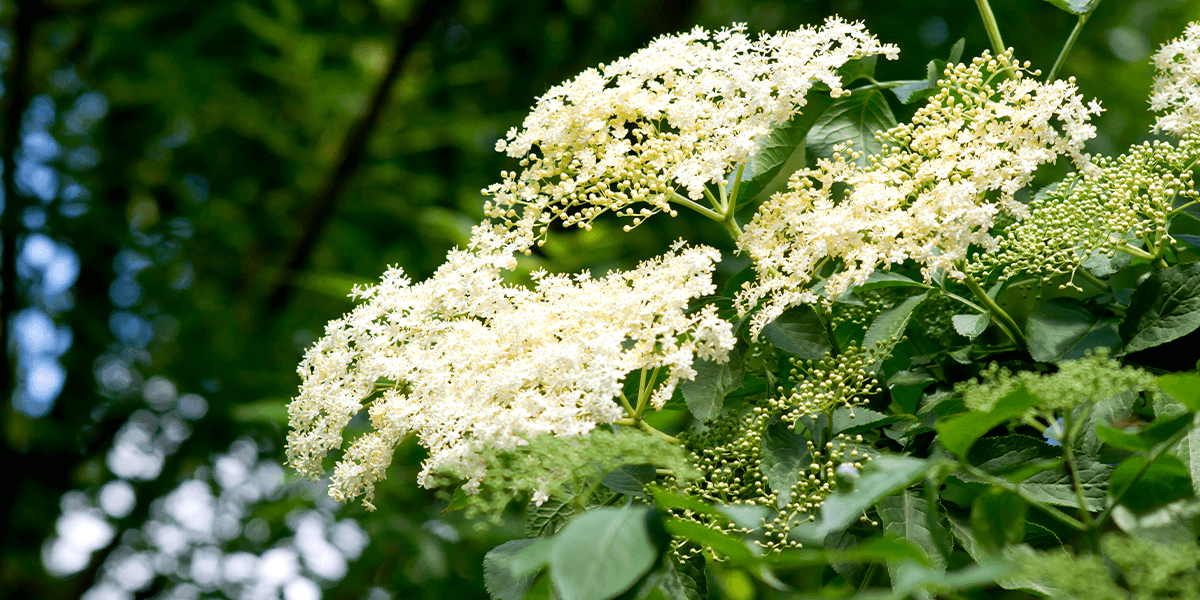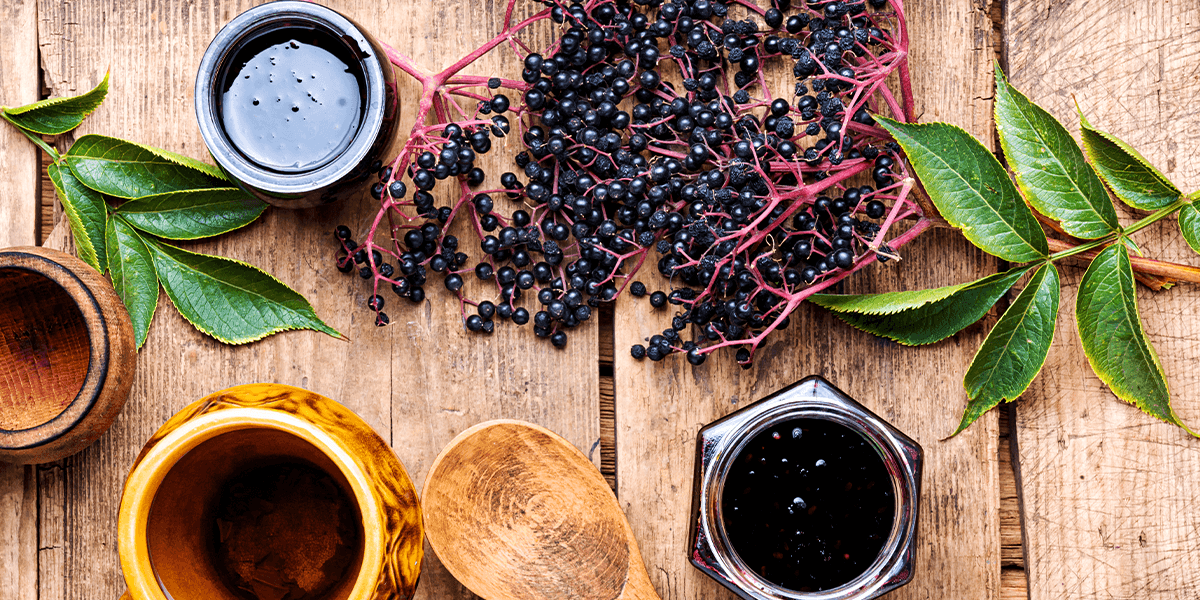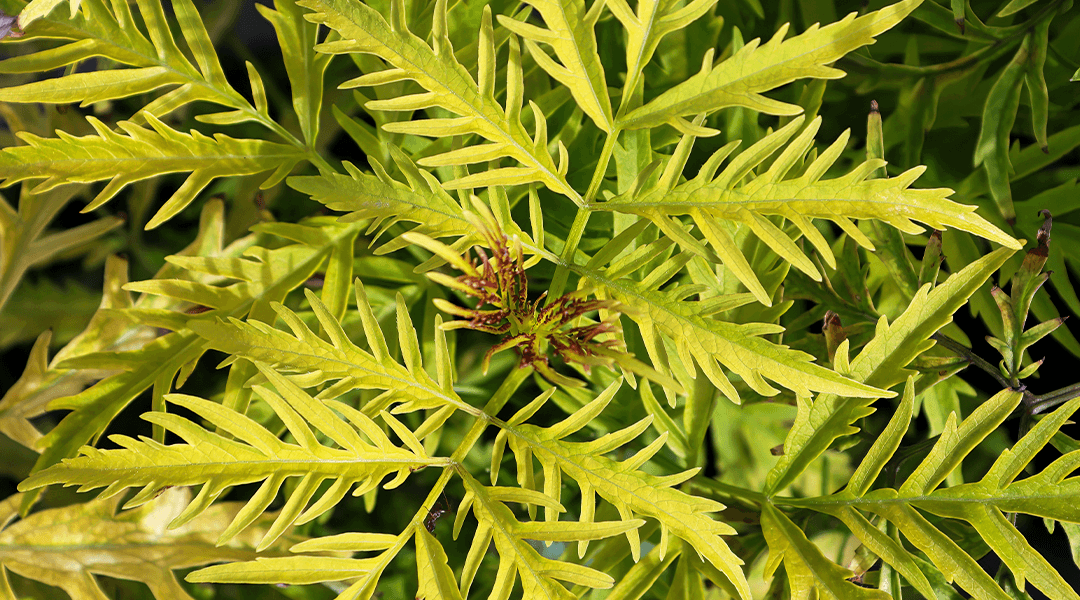Elderberries grow in the wild on both sides of the Atlantic, and have been cultivated in the garden for thousands of years. But these beautiful shrubs remain a mystery to most contemporary gardeners. Here’s a guide to growing elderberries—with a focus on the benefits of Lemony Lace, a good variety for local conditions!

The Story of Elderberries
Elderberries grow in wild woodlands throughout North America. They’re recognized most readily in the fall with their clusters of red, blue, or black berries. Some varieties of the berries are poisonous, while others are edible after cooking, and have been a source of food and medicine on both sides of the Atlantic. In the garden, they’re often grown as an ornamental shrub, especially the Lemony Lace, which offers beauty in three (and sometimes four) seasons.
Lemony Lace Elderberry Throughout the Seasons
Bred for its brightly colored foliage, the Lemony Lace is one of the queens of the ornamental elderberries.
Spring
Big clusters of white flowers emerge in the spring before the leaves open, attracting bees, butterflies, and moths at night. The blossoms are followed by bright, sunny leaves with a lacy texture and subtle red fringes.
Summer
As other leaves age into their emerald dress of summer, the lemony lace turns chartreuse green, glowing in the understory like a golden spirea. At maturity, the shrub reaches a height and spread of seven feet, but you can prune it into a smaller size, as you please.
Fall
The dramatic leaves lose their light green hue and remain bright yellow in fall. In some years, they produce clusters of red berries that benefit birds and stay on the branches over the winter.
How to Grow Elderberry Bushes
Elderberries grow from Zone 4 to 7, making them right at home in Northern Illinois. The shrubs send up a lot of shoots, giving them a dense, full look—an ideal benefit to your privacy, and a shelter for small birds. They have shallow roots that tolerate occasional flooding, but grow best in well-drained soil with full sun. Some say they resemble a Japanese maple!
How to Prune Elderberries
Hold off on pruning in the first two seasons to let your elderberry grow. In the third season, begin pruning to maintain its size, encourage a full shape, and remove unruly branches. Because the Lemony Lace blooms on old wood, annual pruning is best done after it finishes flowering in the spring. Other varieties of elderberry bloom on new wood, which means you can prune them in late winter without affecting flower production. To start, remove damaged and dead branches. Then cut back remaining branches to your desired size and density. Elderberries are vigorous growers and benefit from a good pruning.
Are Elderberries Safe to Eat?
Many elderberries are safe to eat, but not all, so it’s important to know which variety or species you’re dealing with. In general, the species with black or blue berries are edible, while the red berries—like Lemony Lace—are poisonous. But even the black and blue berries must be cooked before eating to destroy a toxin in the seed. Also, the stems, leaves, bark and unripe berries are poisonous, so be mindful only to eat the ripe, cooked berries of edible varieties.

Though these native shrubs have been eclipsed by the more popular berries, many people are now discovering elderberries and starting to grow them for their health benefits. But even if you’re not cultivating them for the berries, the ornamental varieties offer many benefits to northern and Midwest gardens. The lemony lace, in particular, displays uniquely textured leaves and an abundance of bright colors throughout the spring and summer!
Platt Hill Nursery is Chicago’s premier garden center and nursery in the Chicagoland area.


